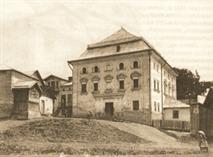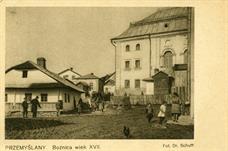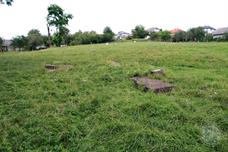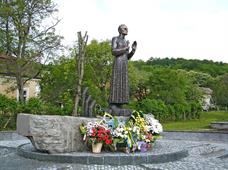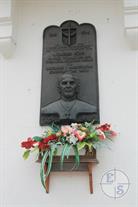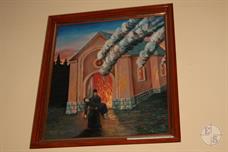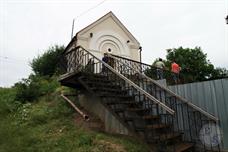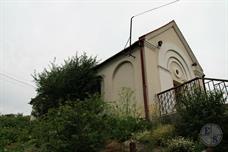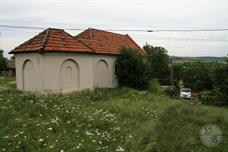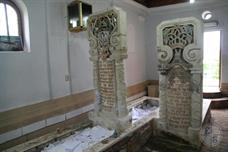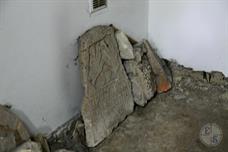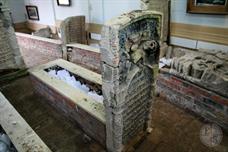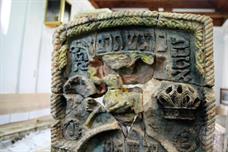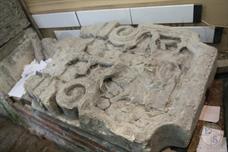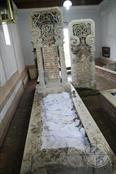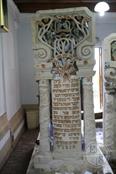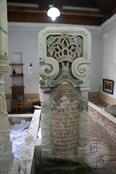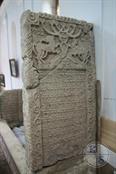Year - Total Population - Jews
1865 - (?) - 2,200
1880 - 3,654 - 2,262
1890 - 4,278 - 2,706
1900 - 4,743 - 2,934
1910 - 4,962 - 2,838
1921 - 4,093 - 2,051
1931 - (?) - 2,322
1865 - (?) - 2,200
1880 - 3,654 - 2,262
1890 - 4,278 - 2,706
1900 - 4,743 - 2,934
1910 - 4,962 - 2,838
1921 - 4,093 - 2,051
1931 - (?) - 2,322
Sources:
- Pinkas Hakehillot Polin: Encyclopedia of Jewish Communities, Poland, Volume II, page 440-442, published by Yad Vashem, Jerusalem. Translated by Amy Samin, JewishGen, Inc.
Photo:
- Eugene Shnaider
- European Jewish Cemeteries Initiative. Peremyshlyany Old Jewish Cemetery
- Pinkas Hakehillot Polin: Encyclopedia of Jewish Communities, Poland, Volume II, page 440-442, published by Yad Vashem, Jerusalem. Translated by Amy Samin, JewishGen, Inc.
Photo:
- Eugene Shnaider
- European Jewish Cemeteries Initiative. Peremyshlyany Old Jewish Cemetery
Peremyshliany
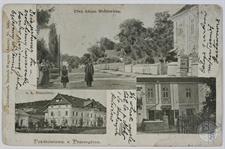 |
 |
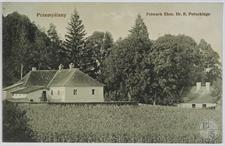 |
| Old Przemyshliany | ||
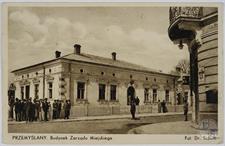 |
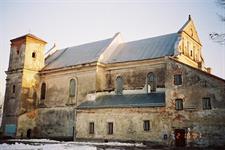 |
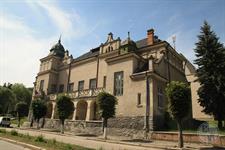 |
| Catholic church. Photo Adam G, photogoroda.com | Former building of the gymnastics society Sokol | |
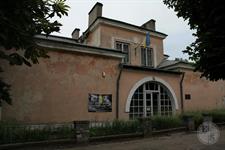 |
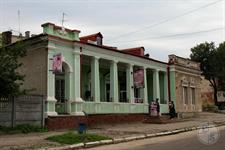 |
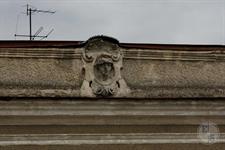 |
| In this house is now a museum | Preserved old buildings |
Lviv region
Przemyślany (ukr. Peremyshliany, Перемишляни) anywas a small community until the first half of the 17th century, when it became an urban settlement. Frequent invasions by the Tartars hindered the development of the city for an extended period of time. The city truly began to develop in the 19th century, but declined during World War I.
The first mention of Jews in Przemyślany occurred in 1581 and 1588, when they were referred to as taxpayers. We have more detailed information from the second half of the 19th century. Regarding the development of the Jewish economy in that period, we know, among other things, of two credit unions for merchants and workshop owners.
In 1903 an exhibition was held in the city for industrial products created in Jewish-owned factories in Przemyślany specifically and in Galicia as a whole. While a variety of products were featured there, those of a factory that manufactured metal screens in Przemyślany were particularly noteworthy, as was the fact that the factory mainly employed Jewish women. Two other Jewish-owned factories existed there, one for leather tanning and the other for the production of shoe polish.
In 1910 virtually the entire town was destroyed by fire.
More than 100 Jewish homes burned to the ground, and more than 200 families were left homeless. During the Russian occupation Przemyślany was burned down again, this time by the Russian army immediately after the occupation. The Cossacks stole the Jews' possessions and killed a few members of the community. After the Russians retreated, there was an outbreak of cholera which took the lives of many Jews.
In the 18th and 19th centuries, Przemyślany became known for its rabbis. Rav Menachem-Mendel of Przemyślany (it is unknown whether or not he dwelled there) was a disciple of the Baal Shem Tov; in 1775 he led a group of Chassidim to Jerusalem, where he died in 1794. He wrote “Drachai Yesharim” and “Yalkutai Omrim.”
Rav Meir bar Yaacov of Przemyślany (1711 – 1781) received the title “the Great” or “the First.” He was also a follower of the Baal Shem Tov and a founder of the Premishlan dynasty. The work of Rav Meir the First was continued by his son, Rav Aharon-Aryeh (died in 1813) who was one of the students of the Baal Shem Tov, the preacher Yechiel-Michael of Zolochiv and Rav Elimelech of Liznesk.
His son, Rav Meir bar Aharon, the grandson of Rav Meir the Great (1781 – 1850) received, upon the death of his father in 1813, the title of “our master, our teacher, our rabbi” in Przemyślany. His straightforward doctrines were gathered together in his books “Or Hameir” and “Margenita Dr. Meir.”
In 1852 Yaacov-Shlomo became the rabbi of Przemyślany, and in 1860 Rav Zvi bar Meir took his place. In 1890 Rav Shmiyah Steinberg was appointed rabbi of Przemyślany; he served there for almost 50 years. At that time Rav Yisrael-Aryeh bar Zvi Frankel (1830 – 1891) also served as rabbi of Przemyślany. In addition, Rav Elimelech bar Yisrael-Aryeh served as rabbi in Przemyślany (he died in 1915). The last rabbi of Przemyślany was Rav Yisrael-Aryeh bar Zvi-Aryeh Margaliot (born 1887, died 1965).
The Zionist organization Zion was established in Przemyślany in 1902. That same year, the organization established a tea house, where in the winter they would distribute rolls and cups of hot tea to the poor.
In 1903 there were elections in the community of Przemyślany and thanks to the head of the community, who was favorably predisposed towards Zionism, the Zionists won. As a result, many of the city's Jews joined the local Zionist Union.
The youth organization HaShachar was founded the same year. In 1905 a Zionist women's organization was founded which numbered nearly 100 members. Another women's organization called Yehudit began operations that same year. During that year the Zionists were again successful in the community elections and the leader of the community was an active Zionist. Twelve Zionists were elected to the 18-seat council, in spite of intensive opposition by the local Chassidim.
In 1912 a branch of Yogand was active in the city, and in 1919 Poale Zion opened a branch there as well.
In 1892 an organization called Tikvat Yisrael (Hope of Israel) offered Hebrew courses in Przemyślany. In 1905, the organization Zion initiated the founding of a Hebrew supplementary school.
In 1906 the Tikvah (Hope) School operated in Przemyślany under the leadership of the teacher Zvi Sharpstein. One hundred and seventeen boys and girls studied there. In 1907 that number rose to 150.
The community decided to provide 1,200 crowns to the company Safa Brura (Clear Language) in order to establish a general Hebrew school in Przemyślany.
The cultural club Toynbee-Hala also operated in the city in 1911 and 1912.
The first mention of Jews in Przemyślany occurred in 1581 and 1588, when they were referred to as taxpayers. We have more detailed information from the second half of the 19th century. Regarding the development of the Jewish economy in that period, we know, among other things, of two credit unions for merchants and workshop owners.
In 1903 an exhibition was held in the city for industrial products created in Jewish-owned factories in Przemyślany specifically and in Galicia as a whole. While a variety of products were featured there, those of a factory that manufactured metal screens in Przemyślany were particularly noteworthy, as was the fact that the factory mainly employed Jewish women. Two other Jewish-owned factories existed there, one for leather tanning and the other for the production of shoe polish.
In 1910 virtually the entire town was destroyed by fire.
More than 100 Jewish homes burned to the ground, and more than 200 families were left homeless. During the Russian occupation Przemyślany was burned down again, this time by the Russian army immediately after the occupation. The Cossacks stole the Jews' possessions and killed a few members of the community. After the Russians retreated, there was an outbreak of cholera which took the lives of many Jews.
In the 18th and 19th centuries, Przemyślany became known for its rabbis. Rav Menachem-Mendel of Przemyślany (it is unknown whether or not he dwelled there) was a disciple of the Baal Shem Tov; in 1775 he led a group of Chassidim to Jerusalem, where he died in 1794. He wrote “Drachai Yesharim” and “Yalkutai Omrim.”
Rav Meir bar Yaacov of Przemyślany (1711 – 1781) received the title “the Great” or “the First.” He was also a follower of the Baal Shem Tov and a founder of the Premishlan dynasty. The work of Rav Meir the First was continued by his son, Rav Aharon-Aryeh (died in 1813) who was one of the students of the Baal Shem Tov, the preacher Yechiel-Michael of Zolochiv and Rav Elimelech of Liznesk.
His son, Rav Meir bar Aharon, the grandson of Rav Meir the Great (1781 – 1850) received, upon the death of his father in 1813, the title of “our master, our teacher, our rabbi” in Przemyślany. His straightforward doctrines were gathered together in his books “Or Hameir” and “Margenita Dr. Meir.”
In 1852 Yaacov-Shlomo became the rabbi of Przemyślany, and in 1860 Rav Zvi bar Meir took his place. In 1890 Rav Shmiyah Steinberg was appointed rabbi of Przemyślany; he served there for almost 50 years. At that time Rav Yisrael-Aryeh bar Zvi Frankel (1830 – 1891) also served as rabbi of Przemyślany. In addition, Rav Elimelech bar Yisrael-Aryeh served as rabbi in Przemyślany (he died in 1915). The last rabbi of Przemyślany was Rav Yisrael-Aryeh bar Zvi-Aryeh Margaliot (born 1887, died 1965).
The Zionist organization Zion was established in Przemyślany in 1902. That same year, the organization established a tea house, where in the winter they would distribute rolls and cups of hot tea to the poor.
In 1903 there were elections in the community of Przemyślany and thanks to the head of the community, who was favorably predisposed towards Zionism, the Zionists won. As a result, many of the city's Jews joined the local Zionist Union.
The youth organization HaShachar was founded the same year. In 1905 a Zionist women's organization was founded which numbered nearly 100 members. Another women's organization called Yehudit began operations that same year. During that year the Zionists were again successful in the community elections and the leader of the community was an active Zionist. Twelve Zionists were elected to the 18-seat council, in spite of intensive opposition by the local Chassidim.
In 1912 a branch of Yogand was active in the city, and in 1919 Poale Zion opened a branch there as well.
In 1892 an organization called Tikvat Yisrael (Hope of Israel) offered Hebrew courses in Przemyślany. In 1905, the organization Zion initiated the founding of a Hebrew supplementary school.
In 1906 the Tikvah (Hope) School operated in Przemyślany under the leadership of the teacher Zvi Sharpstein. One hundred and seventeen boys and girls studied there. In 1907 that number rose to 150.
The community decided to provide 1,200 crowns to the company Safa Brura (Clear Language) in order to establish a general Hebrew school in Przemyślany.
The cultural club Toynbee-Hala also operated in the city in 1911 and 1912.
During the brief Bolshevik occupation of the city, the Jews were harmed physically and were robbed of their possessions.
After the war, the Jewish population dropped by about a third and their economic activity weakened. Most of the financial aid for supporting the Jewish community was provided by the Joint. Operations were renewed in the distilleries, the oil factory, the brick factory, and the saw mill, wherein most Jews made their living.
A few Jewish families continued to make their living in commerce, selling agricultural produce, particularly flax and sugar beets, which were highly praised in the area. The situation grew worse during the crisis of the 1920s. The Jewish merchants and workshop owners arranged a system of mutual aid.
In 1925 a credit institution was established, and in 1929 a charitable fund, which in 1934 – 1935 made 17 loans worth a total of 1,448 zloty. The community council, in spite of its own financial difficulties, built a new poultry slaughterhouse at a cost of $550.
The council also bought land in order to enlarge the cemetery. In addition, the council made small donations to orphans, to the Safa Brura Company, and to the Talmud Torah.
During this period there was vigorous Zionist and public activity. In 1928 the Zionist Union in Przemyślany decided to construct its own building. They raised $1,000 for this purpose, while the estimated total cost of the building was $10,000. Some of that money was donated by American Jews originally from Przemyślany.
In 1923 branches of the Hitachdut (Brotherhood) and Ezra (Help) organizations were active in Przemyślany. In 1930 the organization HaMizrachi opened a branch in Przemyślany which had 30 members. At about the same time, a chapter of Beitar also opened.
In 1930 the chapter of HaNoar HaZioni (Zionist Youth) had a membership of about 100; another group in the city was a branch of Achva (Comradeship). That same year, the membership of Hitachdut Poale Zion reached 62. The organizations Achva and HaShachar were active in Przemyślany starting in 1934.
Kibbutz Hachshara (Preparation) also existed in Przemyślany and had fifteen members.
In 1939, close to the start of World War II, a chapter of Gordonia was reported to have been established.
In the 1931 elections for the Zionist Congress the General Zionists received 108 votes, HaMizrachi received 2, Hitachdut 89, and the Revisionists received 42 votes.
In the elections of 1935 the votes were divided thus: the General Zionists 418, HaMizrachi 17, Hitachdut 223, and the Revisionists 17 votes. In those elections the Radical Zionist party received 51 votes.
A number of Jewish youth joined cells of the Communist party. In 1935 two Jewish girls were given prison sentences for disseminating Communist propaganda. In the elections of 1924 nine Zionists and nine Haredim won places on the community council. In 1926 there were new elections and four Zionists, one Jewish villager and three Chassidim were elected to the community council.
At the beginning of the Zionist rule, however, as a result of quarrels with the local rabbi, they lost their influence and a secular Jew was elected head of the community.
In 1928 twenty-two Jews, twenty-one Poles and five Ukrainians were elected to the city council. In the elections of 1933, of the sixteen Jews elected it is known that four were Zionists, two were Haredim, and one did not belong to any party.
In 1933 a supplementary vocational school was established in Przemyślany, while in the years 1922 – 1924 a supplementary school of culture was created that had only one teacher on staff.
After the war, the Jewish population dropped by about a third and their economic activity weakened. Most of the financial aid for supporting the Jewish community was provided by the Joint. Operations were renewed in the distilleries, the oil factory, the brick factory, and the saw mill, wherein most Jews made their living.
A few Jewish families continued to make their living in commerce, selling agricultural produce, particularly flax and sugar beets, which were highly praised in the area. The situation grew worse during the crisis of the 1920s. The Jewish merchants and workshop owners arranged a system of mutual aid.
In 1925 a credit institution was established, and in 1929 a charitable fund, which in 1934 – 1935 made 17 loans worth a total of 1,448 zloty. The community council, in spite of its own financial difficulties, built a new poultry slaughterhouse at a cost of $550.
The council also bought land in order to enlarge the cemetery. In addition, the council made small donations to orphans, to the Safa Brura Company, and to the Talmud Torah.
During this period there was vigorous Zionist and public activity. In 1928 the Zionist Union in Przemyślany decided to construct its own building. They raised $1,000 for this purpose, while the estimated total cost of the building was $10,000. Some of that money was donated by American Jews originally from Przemyślany.
In 1923 branches of the Hitachdut (Brotherhood) and Ezra (Help) organizations were active in Przemyślany. In 1930 the organization HaMizrachi opened a branch in Przemyślany which had 30 members. At about the same time, a chapter of Beitar also opened.
In 1930 the chapter of HaNoar HaZioni (Zionist Youth) had a membership of about 100; another group in the city was a branch of Achva (Comradeship). That same year, the membership of Hitachdut Poale Zion reached 62. The organizations Achva and HaShachar were active in Przemyślany starting in 1934.
Kibbutz Hachshara (Preparation) also existed in Przemyślany and had fifteen members.
In 1939, close to the start of World War II, a chapter of Gordonia was reported to have been established.
In the 1931 elections for the Zionist Congress the General Zionists received 108 votes, HaMizrachi received 2, Hitachdut 89, and the Revisionists received 42 votes.
In the elections of 1935 the votes were divided thus: the General Zionists 418, HaMizrachi 17, Hitachdut 223, and the Revisionists 17 votes. In those elections the Radical Zionist party received 51 votes.
A number of Jewish youth joined cells of the Communist party. In 1935 two Jewish girls were given prison sentences for disseminating Communist propaganda. In the elections of 1924 nine Zionists and nine Haredim won places on the community council. In 1926 there were new elections and four Zionists, one Jewish villager and three Chassidim were elected to the community council.
At the beginning of the Zionist rule, however, as a result of quarrels with the local rabbi, they lost their influence and a secular Jew was elected head of the community.
In 1928 twenty-two Jews, twenty-one Poles and five Ukrainians were elected to the city council. In the elections of 1933, of the sixteen Jews elected it is known that four were Zionists, two were Haredim, and one did not belong to any party.
In 1933 a supplementary vocational school was established in Przemyślany, while in the years 1922 – 1924 a supplementary school of culture was created that had only one teacher on staff.
After war broke out between the Soviet Union and Germany and the Soviets withdrew, they were joined in particular by groups of Jewish activists who had been involved in national institutions
and municipal administration during the years 1939 – 1941. Some who fled were unable to continue eastward because of the quick advance of the German army, and ended up returning to the city.
On July 1, 1941 Przemyślany was occupied by the Germans. The city's institutions were taken over by the Ukrainians, and the Ukrainian police immediately began kidnapping Jews for forced labor. On July 8, 1941 an order was published obligating Jews to wear an armband bearing the Star of David. Restrictions were imposed on the Jews' movements, and they were ordered to hand over valuables, household goods and furniture to the Germans. The Germans and Ukrainians were not satisfied with the Jews' compliance with that order, and broke into Jewish homes to steal more of their possessions.
In the first half of July 1941 the Ukrainians killed dozens of Jews in the surrounding villages: in Kurowice they killed 17 Jews, and in the village of Bile most of the Jewish residents were slaughtered.
On July 15, 1941, with the active assistance of the local population, the Germans burned down the synagogues of the city and all of the ritual objects inside them. About ten Jews were thrown into the fire and died in the flames. The fires spread to the Jewish houses nearby, and about 40 homes were destroyed. The Ukrainians and groups of Poles in the city took advantage of the opportunity to steal Jewish possessions.
The Judenrat was established in July of 1941. Dr. Rothfeld was the chairman; later David Mandel served in the position. The Judenrat was responsible for supplying people to perform forced labor and for fulfilling the orders of the Germans in regards to economic edicts. The Jewish police, with the Cahane brothers at its head, operated alongside the Judenrat. Some of the Jews of Przemyślany who survived the Holocaust had negative opinions about the behavior of the members of the Judenrat in the final days of its existence, and about some members of the Jewish police, as well.
In October of 1941 the Jews of Przemyślany were ordered to make a “contribution” of one million rubles. On November 5, 1941 all males between the ages of 18 and 60 were ordered to appear in the yard of the municipal gymnasia to be registered for work; those who did not participate could expect to receive the death penalty. The Germans spread a rumor that the registration was related to the opening of a labor camp in the area.
The Jewish community was thrown into turmoil, and several hundred men appeared at the appointed place. The people who had gathered were divided into groups in a selection, and those who owned workshops were released. Those who remained, approximately 450 men, were arranged into six groups, marched to the Kroscienko Forest, and murdered there.
At the end of 1941 and the start of 1942, groups of Jews from Przemyślany were taken to the labor camps in Kurowice, Yaktorov, Hermanov, Viniki, Ostrov, Sasov, and Paluchov. In the beginning, the Judenrat and the families of the people who had been taken tried to stay in touch with those imprisoned in the camps, and to provide them with food and clothing. With the passage of time the connection was lost, and most of the prisoners died from overwork, starvation, illness and systematic murder.
In December 1941 the Jews of Przemyślany were ordered to give the Germans all of the furs they possessed. During the winter of 1941 – 1942 many died of starvation or typhus. In order to ease the distress of hunger a soup kitchen was established, but the scope of its activity was insufficient to meet the need. A Jewish hospital was organized at about the same time, and the staff there cared devotedly for the sick, though only a few of them could be admitted and receive treatment.
and municipal administration during the years 1939 – 1941. Some who fled were unable to continue eastward because of the quick advance of the German army, and ended up returning to the city.
On July 1, 1941 Przemyślany was occupied by the Germans. The city's institutions were taken over by the Ukrainians, and the Ukrainian police immediately began kidnapping Jews for forced labor. On July 8, 1941 an order was published obligating Jews to wear an armband bearing the Star of David. Restrictions were imposed on the Jews' movements, and they were ordered to hand over valuables, household goods and furniture to the Germans. The Germans and Ukrainians were not satisfied with the Jews' compliance with that order, and broke into Jewish homes to steal more of their possessions.
In the first half of July 1941 the Ukrainians killed dozens of Jews in the surrounding villages: in Kurowice they killed 17 Jews, and in the village of Bile most of the Jewish residents were slaughtered.
On July 15, 1941, with the active assistance of the local population, the Germans burned down the synagogues of the city and all of the ritual objects inside them. About ten Jews were thrown into the fire and died in the flames. The fires spread to the Jewish houses nearby, and about 40 homes were destroyed. The Ukrainians and groups of Poles in the city took advantage of the opportunity to steal Jewish possessions.
The Judenrat was established in July of 1941. Dr. Rothfeld was the chairman; later David Mandel served in the position. The Judenrat was responsible for supplying people to perform forced labor and for fulfilling the orders of the Germans in regards to economic edicts. The Jewish police, with the Cahane brothers at its head, operated alongside the Judenrat. Some of the Jews of Przemyślany who survived the Holocaust had negative opinions about the behavior of the members of the Judenrat in the final days of its existence, and about some members of the Jewish police, as well.
In October of 1941 the Jews of Przemyślany were ordered to make a “contribution” of one million rubles. On November 5, 1941 all males between the ages of 18 and 60 were ordered to appear in the yard of the municipal gymnasia to be registered for work; those who did not participate could expect to receive the death penalty. The Germans spread a rumor that the registration was related to the opening of a labor camp in the area.
The Jewish community was thrown into turmoil, and several hundred men appeared at the appointed place. The people who had gathered were divided into groups in a selection, and those who owned workshops were released. Those who remained, approximately 450 men, were arranged into six groups, marched to the Kroscienko Forest, and murdered there.
At the end of 1941 and the start of 1942, groups of Jews from Przemyślany were taken to the labor camps in Kurowice, Yaktorov, Hermanov, Viniki, Ostrov, Sasov, and Paluchov. In the beginning, the Judenrat and the families of the people who had been taken tried to stay in touch with those imprisoned in the camps, and to provide them with food and clothing. With the passage of time the connection was lost, and most of the prisoners died from overwork, starvation, illness and systematic murder.
In December 1941 the Jews of Przemyślany were ordered to give the Germans all of the furs they possessed. During the winter of 1941 – 1942 many died of starvation or typhus. In order to ease the distress of hunger a soup kitchen was established, but the scope of its activity was insufficient to meet the need. A Jewish hospital was organized at about the same time, and the staff there cared devotedly for the sick, though only a few of them could be admitted and receive treatment.
In May of 1942 the Germans broke into the hospital and murdered all of the patients, a few dozen people. After that, the Jews did not go to the hospital when they became ill.
The summer and autumn of 1942 were marked by many murderous actions (aktions) by the Germans. In the aktion of July 28, 1942, another in September, and yet another on November 6, 1942, hundreds of the Jews of Przemyślany were sent to their destruction in Bełźec.
In October 1942 the Jews of Przemyślany were forced into a ghetto. In the second half of November 1942 Jews from Gliniany and Sviz were brought into the ghetto. It was horribly crowded in the ghetto; people suffered especially from the shortage of water. There were only two wells in the ghetto, and at all hours of the day there were long lines of people waiting to obtain a bucket of water.
On December 5, 1942 there was another aktion. The Germans and the Ukrainian policemen removed about 3,000 Jews from the ghetto and took them to the train station where a selection took place. A few dozen craftsmen were allowed to return to the ghetto; the remaining people were forced into the cattle cars and sent to their destruction in the camp at Bełźec.
After this aktion, the area of the ghetto was reduced. An extension of the labor camp in Kurowice was established in Przemyślany. In this camp workers who were essential to the German economy were concentrated.
During the winter of 1942 – 1943, the remnants of the community built hiding places in order to have a place to conceal themselves during the next aktion. The hiding places, especially those within the nearby forests, were designed for long-term habitation.
On May 22, 1943 the ghetto was completely destroyed. That final aktion lasted for seven days because the Germans had difficulty finding all of the Jews who were in hiding. A substantial portion of the surviving remnant of the community was murdered within the ghetto, while the rest were taken to the nearby forest and killed. Meanwhile, only about 70 people were left inside the ghetto, for the purpose of gathering together and organizing all of the remaining possessions of the Jews. Within a short period of time the people in that group were also murdered. Przemyślany was then declared judenrein - free of Jews.
On June 28, 1943 the Jews who had been imprisoned in the labor camp of Przemyślany were executed.
A short time before the final aktion of destruction of the Jews of Przemyślany, and even while it was happening, groups of Jews escaped into the forests and looked for places to hide. They became the target of a relentless hunt by the Germans and the farmers of the area. Some of the Jews in the forest were equipped with weapons, which they used to obtain food and for self-defense. In the forests of Chanachov near Przemyślany, the armed Jews made contact with a group of Polish fighters and joined with them to protect Polish villages against attacks by Ukrainian farmers and against gangs of nationalistic Ukrainians loyal to Bandera, at whose hands many of the Jews in the forests died.
After the city was liberated on July 20, 1944, a few dozen survivors burst forth from the forests and hiding places and gathered there. Some of them went to live in Zolochiv, though after a few months the majority of them left the area and went to Poland on their way to Eretz Yisrael and other countries in the west.
The summer and autumn of 1942 were marked by many murderous actions (aktions) by the Germans. In the aktion of July 28, 1942, another in September, and yet another on November 6, 1942, hundreds of the Jews of Przemyślany were sent to their destruction in Bełźec.
In October 1942 the Jews of Przemyślany were forced into a ghetto. In the second half of November 1942 Jews from Gliniany and Sviz were brought into the ghetto. It was horribly crowded in the ghetto; people suffered especially from the shortage of water. There were only two wells in the ghetto, and at all hours of the day there were long lines of people waiting to obtain a bucket of water.
On December 5, 1942 there was another aktion. The Germans and the Ukrainian policemen removed about 3,000 Jews from the ghetto and took them to the train station where a selection took place. A few dozen craftsmen were allowed to return to the ghetto; the remaining people were forced into the cattle cars and sent to their destruction in the camp at Bełźec.
After this aktion, the area of the ghetto was reduced. An extension of the labor camp in Kurowice was established in Przemyślany. In this camp workers who were essential to the German economy were concentrated.
During the winter of 1942 – 1943, the remnants of the community built hiding places in order to have a place to conceal themselves during the next aktion. The hiding places, especially those within the nearby forests, were designed for long-term habitation.
On May 22, 1943 the ghetto was completely destroyed. That final aktion lasted for seven days because the Germans had difficulty finding all of the Jews who were in hiding. A substantial portion of the surviving remnant of the community was murdered within the ghetto, while the rest were taken to the nearby forest and killed. Meanwhile, only about 70 people were left inside the ghetto, for the purpose of gathering together and organizing all of the remaining possessions of the Jews. Within a short period of time the people in that group were also murdered. Przemyślany was then declared judenrein - free of Jews.
On June 28, 1943 the Jews who had been imprisoned in the labor camp of Przemyślany were executed.
A short time before the final aktion of destruction of the Jews of Przemyślany, and even while it was happening, groups of Jews escaped into the forests and looked for places to hide. They became the target of a relentless hunt by the Germans and the farmers of the area. Some of the Jews in the forest were equipped with weapons, which they used to obtain food and for self-defense. In the forests of Chanachov near Przemyślany, the armed Jews made contact with a group of Polish fighters and joined with them to protect Polish villages against attacks by Ukrainian farmers and against gangs of nationalistic Ukrainians loyal to Bandera, at whose hands many of the Jews in the forests died.
After the city was liberated on July 20, 1944, a few dozen survivors burst forth from the forests and hiding places and gathered there. Some of them went to live in Zolochiv, though after a few months the majority of them left the area and went to Poland on their way to Eretz Yisrael and other countries in the west.
Оmelyan Hryhorovych Kovch (Ukrainian: Омелян Григорович Ковч; August 20, 1884, Kosmach - March 25, 1944) - Ukrainian Greek-Catholic priest murdered in Majdanek concentration camp.
He was born in a peasant family in the town of Tlumach in the Kosiv region of Western Ukraine. In 1919, he was a field chaplain for the Ukrainian Galician Army. He served as a parish priest from 1921 to 1943 at the church of St. Nicholas in the village of Peremyshliany. He fathered six children, and devoted himself to helping the poor and orphans.
In the spring of 1943 he was arrested by the Gestapo for harboring Jews, specifically for providing Jews with more than 600 baptismal certificates (alternative date from another source: he was arrested by the Gestapo on December 20, 1942). On March 25, 1944 he died in the infirmary of Majdanek concentration camp near Lublin, Poland.
His beatification took place on June 27, 2001 in Lviv, during the Byzantine rite liturgy conducted by Pope John Paul II.
He was born in a peasant family in the town of Tlumach in the Kosiv region of Western Ukraine. In 1919, he was a field chaplain for the Ukrainian Galician Army. He served as a parish priest from 1921 to 1943 at the church of St. Nicholas in the village of Peremyshliany. He fathered six children, and devoted himself to helping the poor and orphans.
In the spring of 1943 he was arrested by the Gestapo for harboring Jews, specifically for providing Jews with more than 600 baptismal certificates (alternative date from another source: he was arrested by the Gestapo on December 20, 1942). On March 25, 1944 he died in the infirmary of Majdanek concentration camp near Lublin, Poland.
His beatification took place on June 27, 2001 in Lviv, during the Byzantine rite liturgy conducted by Pope John Paul II.

- Home
- Shtetls
- Vinnytsia region
- Volyn region
- Dnipro region
- Donetsk region
- Zhytomyr region
- Zakarpattia region
- Zaporizhzhia region
- Ivano-Frankivsk region
- Kyiv region
- Kropyvnytskyi region
- Luhansk region
- Lviv region
- Mykolayiv region
- Odessa region
- Poltava region
- Rivne region
- Sumy region
- Ternopil region
- Kharkiv region
- Kherson region
- Khmelnytskyi region
- Chernihiv region
- Chernivtsi region
- Cherkasy region
- Crimea
- Synagogues
- Cemeteries
- Objects & guides
- Old photos
- History
- Contact
Jewish towns of Ukraine
Jewish towns of Ukraine
My shtetl
My shtetl
Donate
